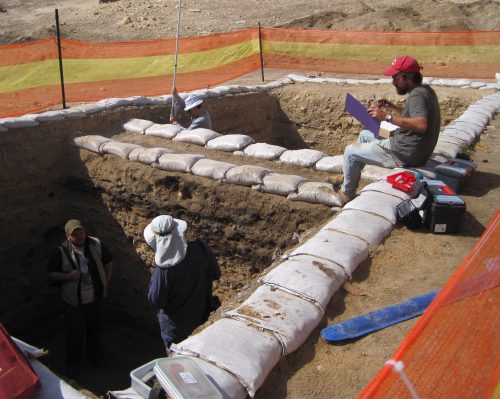Microscopic evidence reveals effects of ancient agricultural collapse
October 16, 2020
Jeff Richardson
907-474-6284

A new study of ancient trash dumps near villages in Israel’s Negev desert highlights how communities coped with collapsing agricultural economies during the end of the Byzantine era.
The study, reported in the new issue of PLOS ONE, emphasizes the importance of looking into the microscopic sediment matrix of archaeological sites. Using microscopic evidence of livestock dung, the international team of researchers is offering a new perspective on how the decline of the commercial agriculture sector affected villages of the Negev.
Innovation in food security has been a hallmark of communities in the Negev Desert of Israel for thousands of years. From the fourth through 10th centuries, a time broadly referred to as Late Antiquity, more than 30,000 acres of terraced fields, orchards, and vineyards grew across the agricultural heartland surrounding the desert villages of Shivta, Nessana, Rehovot, Mampsis, Avdat, and the central town of Elusa. By the 10th century, much of the agricultural infrastructure crosscutting the hinterlands was largely abandoned.
“Our findings demonstrate how archaeological investigations of hinterland trash mounds can inform long-term outlooks on sustainable resource and waste management in challenging environments,” said University of Alaska Fairbanks postdoctoral researcher Don Butler, the lead author of the study.
Other contributors to the paper include Guy Bar-Oz, Ruth Shahack-Gross and Yotam Tepper, of the University of Haifa; Zachary Dunseth, of Brown University; and Tali Erickson-Gini, of the Israel Antiquities Authority.

In the past, the installation and maintenance of runoff-water-harvesting systems and the improvement of soils using livestock dung were forefront concerns among Negev farmers.
However, the team identified very little livestock dung in trash mounds during the flourishing Byzantine period. Large amounts of dung were disposed of in later trash accumulations dating to the Early Islamic period, when village populations were fading and herders from the south were settling in the area.
The team proposes that this led to an increase in the production of livestock dung in and around Negev villages. Sizable dung stocks were also no longer needed to fertilize large crop fields.
“Some dung may have been used to fertilize smaller plots to grow domestic produce, some for fuel, and the excess was dumped and incinerated during regular village maintenance,” Shahack-Gross said.
ADDITIONAL CONTACT: Don Butler, dhbutler3@alaska.edu


